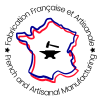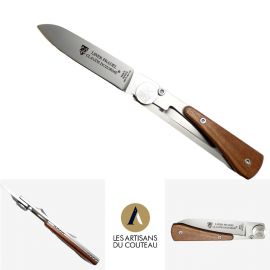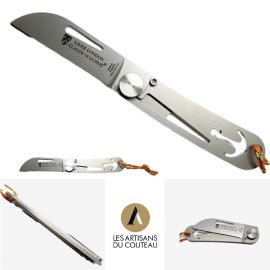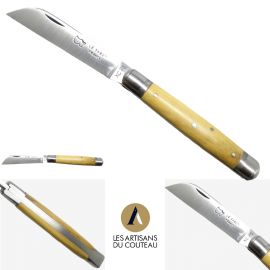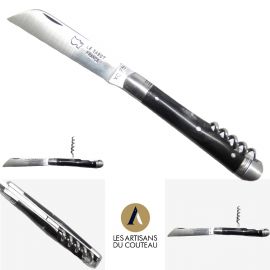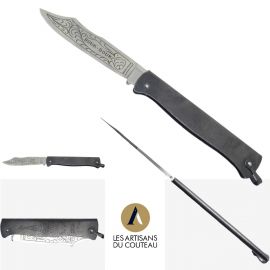

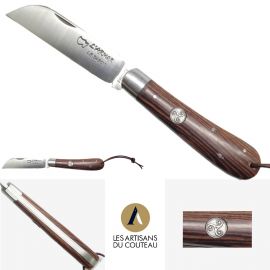
ARMOR knife - violet wood handle
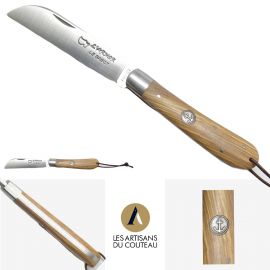
ARMOR knife - olive wood handle
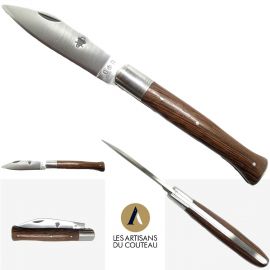
KENAVO knife - wenge handle
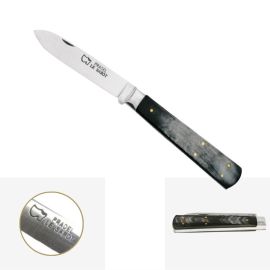
PRADEL knife - horn handle
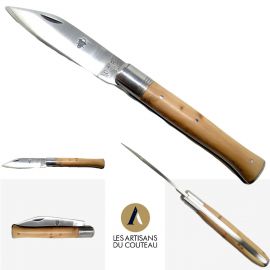
KENAVO knife - juniper handle
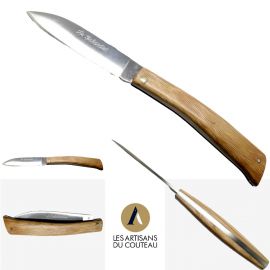
GABARDIER knife - oak handle
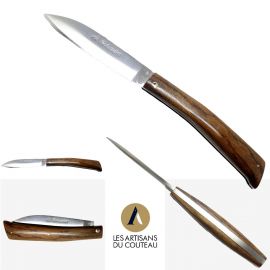
GABARDIER knife - bocot handle
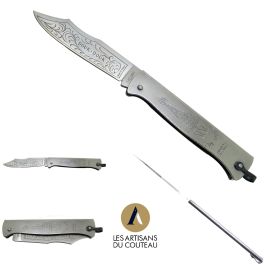
DOUK-DOUK knife - Chrome
The history and specificities of the Breton knife
Britany’s economy has long been related to the exploitation of the sea’s resources. Whether it is about cutting fish, seafood or nets, sailors had to have knives which could adapt to different situations. The Breton knife’s characteristics are its blade with a rounded extremity, and its 2 mitres. Thanks to the rounded blade, sailors did not get hurt when the ship was shaken by the waves. Sharp blades are not allowed on boats. The handle can be made with horn or wood, depending on the model.
Several models, several shapes, several uses
- The Pradel knife has a centralized point. This sailor knife was used as early as the 19 th century in all the regions of Brittany and Normandy.
- The Armor knife proudly displays an anchor on its olive tree wood handle, recalling is naval origins. Its blade has the shape of a sheep hoof. The handle has a small hole at its extremity, through which a lace passed so that sailors did not lose their knife. This knife is mostly used on the northern coasts of Brittany.
- The Kenavo knife was also a sailor knife. Kenavo means “goodbye” in Breton. It was mostly used to cut the cordages and the nets. Its fish-shaped handle had a flat steel extremity which was used to put some tobacco through a pipe. This knife is made from wenge wood, both dense and dark.
- The Tonneau knife, created in the 20 th century, was offered to workers. Its corkscrew incorporated into the handle was used to open bottles. It was particularly appreciated by sommeliers.
- Finally, the London knife was used by English sailors. Its handle shows an anchor and a shorter blade than usual.
The Breton cutlery is deeply attached to its region’s history, made of journeys in the high sea. Manufactured by professional craftspeople, our Breton knives translate an authentic part of this mythical history.



